AFM review: Research progress of MXene-based nanomaterials for metal ion batteries
QQ Academic Group: 1092348845
Detailed
¡¾Research Background¡¿
Electrochemical energy storage devices can store renewable energy (such as solar energy, blue energy, and wind energy) as electrochemical energy, can provide green alternatives for power consumption applications, can slow down the rapid consumption of fossil energy and reduce environmental pollution. Among them, lithium ion batteries have shown higher energy density than supercapacitors in the field of wearable electronics and electric vehicles. However, the increasing cost of lithium resources may not meet the future demand for high energy density and power density in high-performance electric vehicles. Therefore, researchers have turned their attention to metal ion batteries based on other alkali metals, and some multivalent metal ion batteries. Such as a new type of sodium ion battery, potassium ion battery and zinc ion battery. In general, advanced battery electrodes should meet the ideal electronic and ion conduction requirements and structural stability in repeated charge and discharge cycles, which further requires electrode materials with suitable physicochemical properties and outstanding electrochemical performance. However, there is currently no electrode material that can perfectly meet these stringent requirements.
MXenes, as a large category of 2D excessive metal carbides or carbonitrides, has attracted great attention from researchers. It is mainly to etch the A atom layer in the corresponding precursor MAX phase by selective etching to form a 2D layered structure, which has ultra-high conductivity and benefits from the hydrophilic surface and has a very high degree in aqueous solutions. Good dispersion. 2D MXene nanosheet materials are often used in applications such as supercapacitors, lithium ion batteries, and ion batteries. Recently, Professor Wu Zhongshuai from Dalian Institute of Chemical Physics , Chinese Academy of Sciences published a research progress report titled Advance Advances and Promise of MXene-Based Nanostructures for High-Performance Metal Ion Batteries in the internationally renowned academic journal Advanced Functional Materials , which systematically summarized MXenes-based nanomaterials Research progress in ion batteries emphasizes that MXenes can be used as both active materials, conductive substrates and even current collectors. In addition, the loading, coating and forming methods of the MXene-based composite in different dimensions (0D, 1D and 2D) are also elaborated , and the future research directions are proposed.
¡¾Graphic introduction¡¿
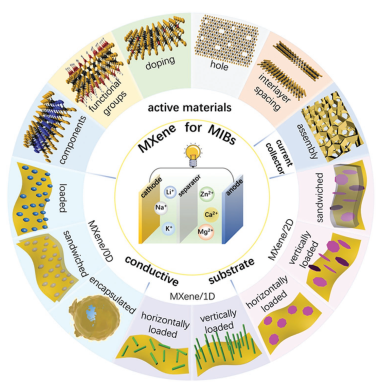
Figure 1. MXene-based nanostructures are used in ion batteries.
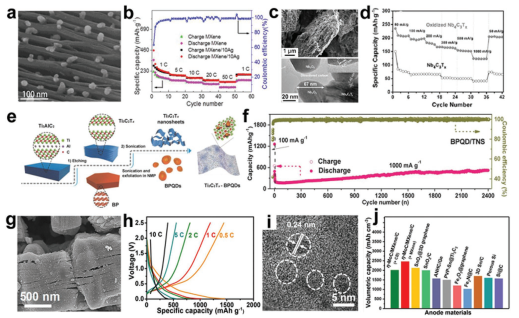
Figure 2. SEM and magnification performance of MXene / Ag composite electrode; SEM and TEM images of Nb 2 O 5 @Nb 4 C 3 T x electrode and magnification performance; synthesis process of black phosphorus quantum dot / Ti 3 C 2 composite electrode Cycle performance.
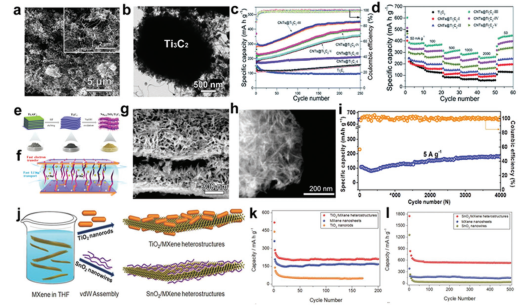
Figure 3. Morphology and electrochemical performance of CNT / Ti 3 C 2 . Energy storage mechanism of Na 0.23 TiO 2 / Ti 3 C 2 composite electrode. Electrochemical properties of TiO 2 / MXene and SnO 2 / MXene heterostructures.
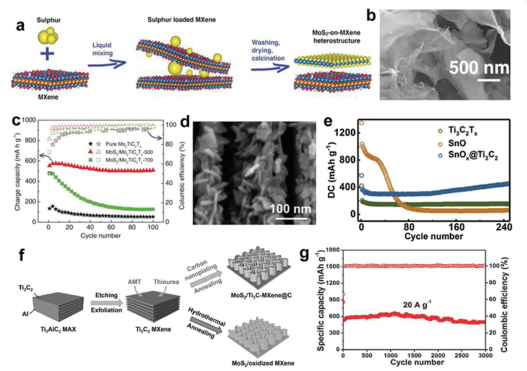
Figure 4. Synthesis process and morphological characterization of MoS 2 / Mo 3 TiC 2 T x . SEM image of SnO x / Ti 3 C 2 and cycle performance. Synthesis process and cycle performance of MoS 2 / Ti 3 C 2 -MXene @ C nanocomposite electrode.

Figure 5. SEM, TEM and electrochemical performance tests of TiO 2 / Ti 3 C 2 composite electrode. Ti 3 C 2 / NiCoP composite and the corresponding sodium storage mechanism.
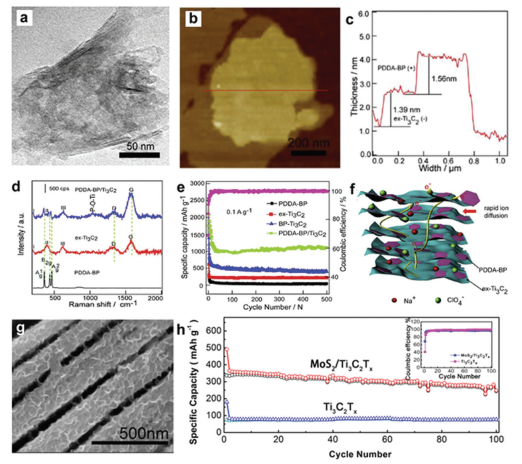
Figure 6. SEM, AFM and Raman spectra of PDDA-BP / Ti 3 C 2 composite, electrochemical performance and assembly model. MoS 2 / Ti 3 C 2 T x composite micro-morphology and cycle performance.
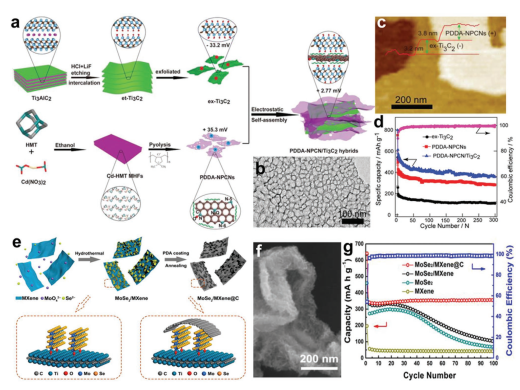
Figure 7. Physical characterization and electrochemical performance test of PDDA-NPCN / Ti 3 C 2 composite. MoSe 2 / Morphology and cycling stability test MXene @ C composites.
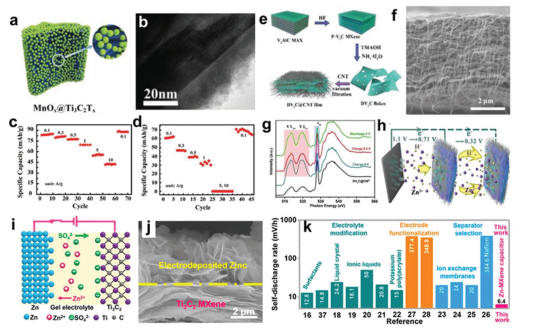
Figure 8. MnO x / Ti 3 C 2 T x composite, DV 2 C @ CNT film and Zn @ Ti 3 C 2 film are used for zinc storage.
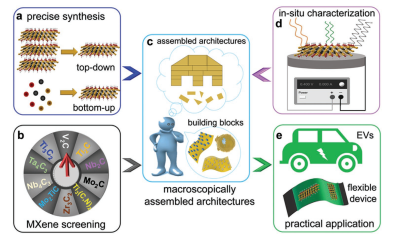
Figure 9. Future challenges of applying MXene- based nanomaterials to ion batteries: 1) precise synthesis of MXene nanosheets; 2) rational screening of MXene; 3) macro-assembly methods; 4) advanced in-situ characterization and 5) practical applications
¡¾Summary and Outlook¡¿
In the past decade, through the joint efforts of all researchers, MXene nanosheets used in ion battery has made great progress, but the rational design of advanced MXene based nanostructures are still at in its infancy, the tip of the iceberg, new The assembly method is urgently to be explored. Some structural composite methods have not been reported (such as the MXene / 1D composite coating method), and the overall design of the MXene electrode is rarely reported. In addition, MXenes has the most advantages over other two-dimensional materials in that it has both high conductivity and hydrophilicity. In particular, 2DMXene nanosheet smart ion battery pack for new features are very advantageous, such as self-healing, electrically induced discoloration, and degradation of characteristics. Therefore, MXene and MXene based nanocomposites will be the next generation of high performance ion battery provides us with many opportunities.
Literature link:
https://doi.org/10.1002/adfm.202000706.
Source:
statement:
It is purely academic and non-commercial. If there is any infringement, please contact us immediately. We will delete it as soon as possible to protect the intellectual property of the original author. Thank you teachers and students for your attention and support.
- Previous£º Research on the Influe
- Next£º MXene breakthrough: Na


 mxene academic
mxene academic